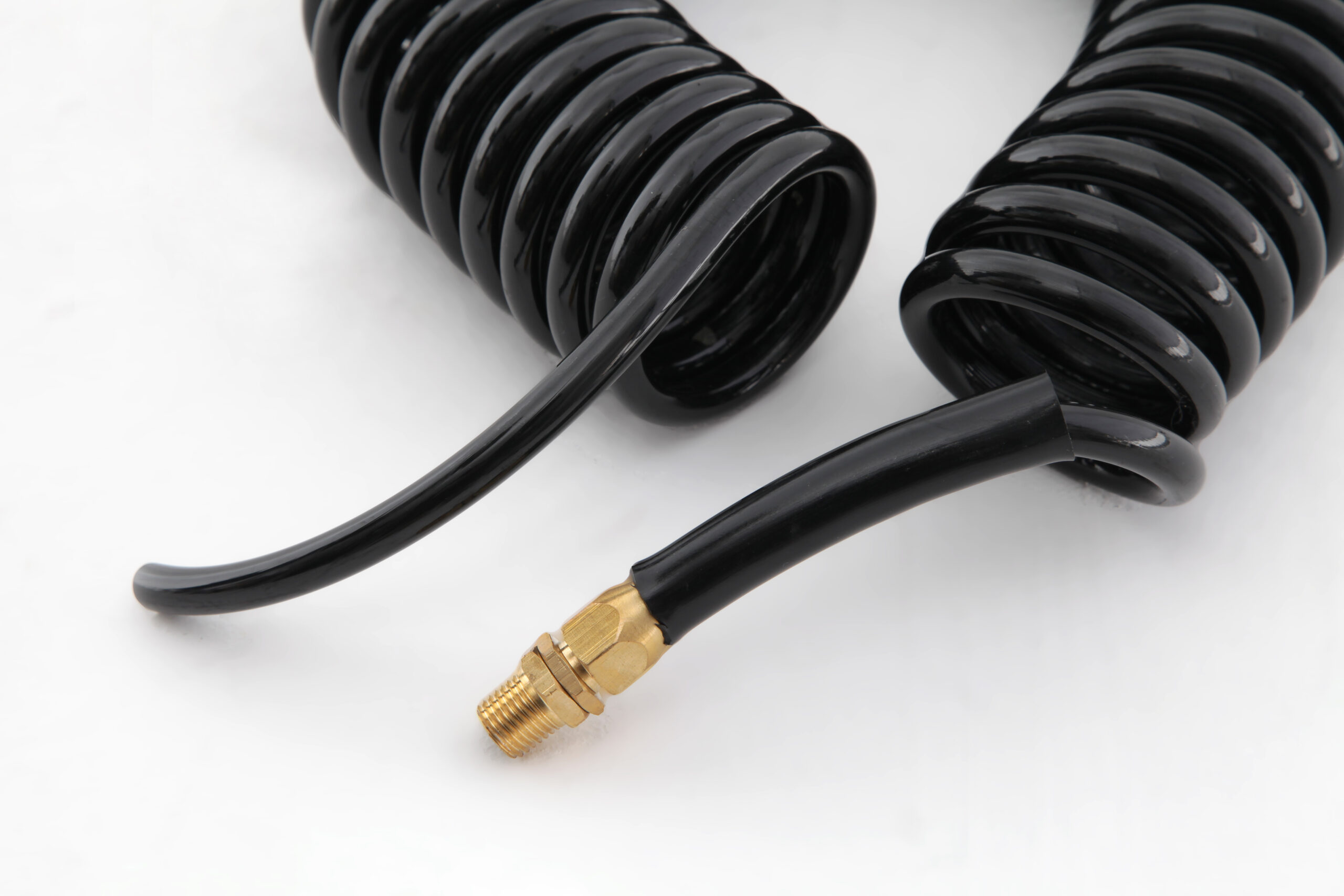Here’s an overview:
Mismatches in coupling sizes when replacing worn-out couplings can have unforeseen implications.
When substituting a larger hydraulic hose inside diameter (ID) with a smaller one, it’s crucial to consider flow velocity.
Discover how to determine flow velocity.
One frequently encountered scenario by hydraulic hose assembly suppliers is when a customer brings a worn-out hydraulic hose for replacement, but the required coupling for that specific hose size is unavailable. But, suppose you do have the correct couplings, albeit for a smaller hose size ID.
A seemingly logical solution is to recreate the hose assembly using a smaller-size hydraulic hose coupled with a jump-size fitting. However, substituting the hose assembly with a smaller hose size than the one originally designed for that hydraulic system can potentially harm and decrease the system’s efficiency.
So, what happens when you substitute a hose with the wrong hose size?
Flow refers to fluid movement and is split into two categories: flow rate and flow velocity. The flow rate measures the volume of hydraulic fluid produced by the hydraulic pump within a specific timeframe, typically gauged in gallons per minute (GPM). On the other hand, flow velocity measures the speed of the hydraulic fluid moving in a given direction over a specified time, measured in feet per second.
Flow velocity depends on both the hydraulic pump’s flow rate and the hydraulic hose size. Modifying the hydraulic pump’s flow rate while keeping the hose size constant affects the flow velocity, and similarly, altering the hose size while maintaining the flow rate unchanged impacts the flow velocity.
Flow velocity becomes critical when replacing a larger hydraulic hose ID with a smaller one. When a new hydraulic hose with a smaller ID replaces an existing one, the same fluid volume that flowed through the original larger hydraulic hose is now funneled through the new smaller one. This action restricts flow, enhances downstream pressure, and raises flow velocity.
In certain cases, this may not be an issue, but it’s essential to properly evaluate the situation. A simple workaround is to upgrade to a larger hose size, although it’s more costly, occupies more space, and may even hinder the customer’s equipment performance.
Why can high flow velocity be detrimental to a hydraulic system?
Flow velocity determines whether the flow will be laminar or turbulent. Ideally, we aim for a smooth, steady, and uniform flow pattern from the pump to the actuator, referred to as laminar flow. Laminar flow is attained at lower velocities, and fluid layers move in an even, parallel flow pattern.
Such a flow pattern is ideal for minimizing friction, pressure drops, and optimizing hydraulic system efficiency. Fluid-on-fluid friction occurs as fluid layers, moving at different velocity rates, slide over each other. A laminar flow pattern also improves system response, lubrication, and reduces air pockets or bubbles that can cause inefficiencies.
The higher the flow velocity, the more turbulent the flow becomes. When flow velocity is high, the inner tube’s surface roughness disrupts the flow path, turning it chaotic. Turbulent flow patterns cause energy loss in the form of friction, leading to unwanted pressure drops and hydraulic system inefficiencies.
Moreover, high flow velocity also increases fluid temperatures. Higher fluid temperature significantly reduces hose life, implying that reducing hose size may also lead to undesired system downtime. Further information on this temperature impact can be found in the Heat Gain Data section of the Gates Fluid Flow Pressure Calculator.
For suction and return lines, high flow velocity can induce pump cavitation over time. Meaning, the hose tube ID must be appropriately sized to maintain flow velocity at an optimal level to prevent energy loss due to friction.
How do you calculate fluid velocity and determine the acceptable velocity?
To calculate flow velocity, you need a constant, the hose’s cross-sectional area, and the hydraulic pump’s flow rate using a flow meter. With these inputs, you can use the following formula:
After determining the flow velocity, use the calculated velocity rate, along with the pump’s flow rate, to verify if the replacement hose size is suitable for the system. An easy method is to use the Gates nomographic chart found in the Gates Hydraulic and Fleet Hose catalog. The chart includes three parts: 1) the flow rate axis, 2) the hose ID axis, and 3) the flow velocity axis.
By knowing two of the three axis values, you can figure out the third value—simply draw a straight line through the known values to ascertain if the flow rate and flow velocity are acceptable for your hose size, or to determine the appropriate hose size based on flow rate and fluid velocity.
Here are the recommended velocity rates for a typical hydraulic system:
BETTER SAFE THAN SORRY
While it may be tempting to replace a customer’s hydraulic hose with a different-sized hose, it may inadvertently lead to less efficient hydraulic equipment and potential hose tube damage. The best practice is to stick to the same hose size.





